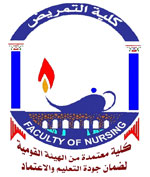Abstract:
Sexually transmitted diseases (STDs) are responsible for a variety of health problems, and can have especially serious consequences for adolescents and young adults. Adolescence is marked by profound biological and psychological changes. However, adolescent health, especially reproductive health, is a neglected area. Aim of the study was to recognize the perception of adolescent girls regarding the sexually transmitted diseases and infection, and to determine whether adolescent girls differentiate between the terms sexually transmitted disease (STDs) and sexually transmitted infection (STIs). Subjects and methods a descriptive cross-sectional research design was used to conduct the study at eight faculties that are selected randomly in El- Minia University. It included 408 female students by random sampling technique. The data were collected by using a self-administered questionnaire including knowledge and attitude rating scale. The study results revealed that there were unsatisfactory knowledge related to mode of transmission (63%), types (69.1%), and symptoms of STDs/STIs (85.8%). while they had satisfactory knowledge about curability, complication and protection ways of sexually transmitted diseases and Infection. The sources of information were mainly the school/university (20.1%), and then mass media (15.4%). Shyness was the most pronounced barrier (38.2%) for seeking health care, Tradition come the next barrier (21.1%), followed by there is No special girl's center (10.3%). Knowledge was significantly higher among students in urban areas (p<0.001) than rural areas, and whose mothers able to read and write. Conclusion the study concluded that lack awareness of adolescent girls about sexually transmitted disease and infections and they unable to differentiate between the terms sexually transmitted disease (STDs) and sexually transmitted infection (STIs). Therefore, it is recommended to conduct sessions discussing sexual health and STDs/STIs for mothers at schools and students at universities, with the cooperation of non-governmental organizations (NGOs), worship places, National Women Council, and-cultural and behavioral determinants of sexual risk behaviors, which may lead to STDs/STIs.
Research Department
Research Journal
Assuit Scientific Nursing Journal
Research Member
Research Publisher
Manal Farouk
Research Rank
2
Research Vol
volume(1) Number (2) December 2013
Research Year
2013
Research Abstract

